

| Online: | |
| Visits: | |
| Stories: |

| Story Views | |
| Now: | |
| Last Hour: | |
| Last 24 Hours: | |
| Total: | |
Garden Swales
Until last summer we hadn't had any trouble keeping the garden watered. Between regular rainfall, mulch, and rainwater irrigation as needed, we've done okay. Last summer though, was the hottest and driest we've had since we moved here. Daily temperatures averaged upper-90s to 100°F (37°C) from May through September. In July I took my soil's temperature – 94°F (34°C)! What can grow in that!
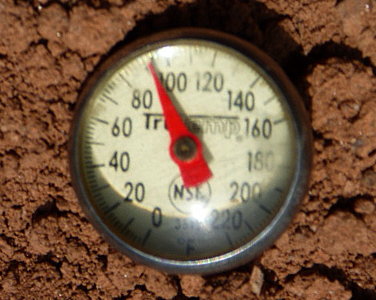 |
| Photo taken last July to record soil temperature. The little rain we got seemed to evaporate right out of the ground. |
Once the rain tanks were empty, most of the garden went into survival mode and stopped producing. It was worrisome and I can't help but wonder if this summer will be the same. So my garden project this month has been to put in some swales.
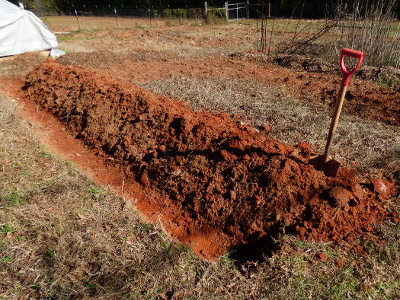 |
| I dug down to the clay subsoil, a ditch about knee deep and two to three shovel-widths wide. It's as long as our garden beds, 16'. |
I'm guessing most of you know what swales are; they are ditches dug along the contour of the land for the purpose of catching and holding rain runoff. I'm putting my first one at the top of the garden.
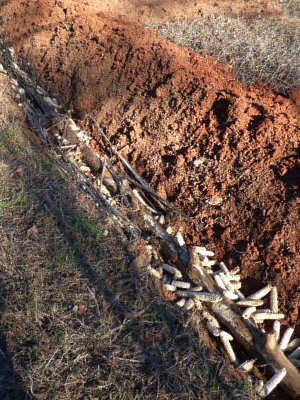 |
| Filling with rotting logs, stalks, and corn cobs |
The next step was to fill it with material that would help retain moisture. I'm using old rotting logs previously used as garden terrace retainers, plus things which will get water logged easily but take too long in the compost pile: corn cobs and stalks from sunflowers, corn, and Jerusalem artichokes, bark from Dan's sawmill projects.
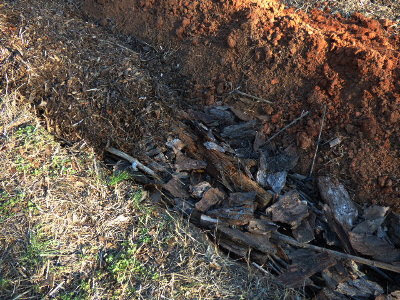 |
| Pine bark and wood chip mulch on top |
I topped it off with the wood chip mulch I've been raking up from last summer's bean and cantaloupe bed.
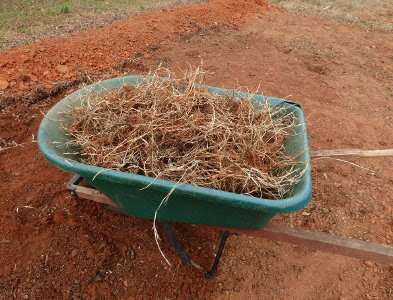 |
| While raking up the mulch I extracted three wheelbarrow loads of my beloved wiregrass. (I'm being facetious, folks!) |
The soil which was removed becomes a berm which also helps with water retention. I removed as many wiregrass roots as I could, relocated the earthworms, replanted the dug up daffodil bulbs, and planted the whole thing with Dutch clover seed from the feed store.
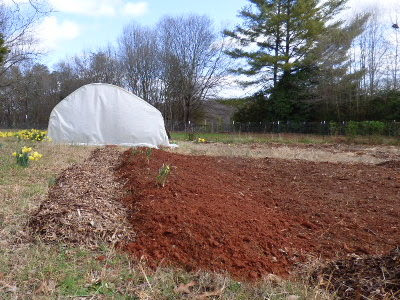 |
| Berm somewhat leveled. |
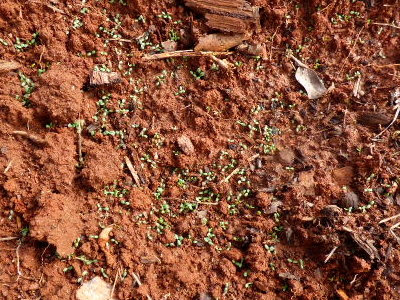 |
| Clover seed is beginning to sprout! |
Our garden is three, 16-foot beds wide (plus walk paths) so I'm planning to get at least two more built, also at the top of the garden. We're also going to decrease the size of the kitchen and canning garden by at least half. Our first year here we planned out a 80-foot by 60-foot garden based on Dick Raymond's “Eat 'N Store Garden” from The Joy of Gardening. While that size garden worked well for Dick Raymond and his fancy-schmancy top-of-the-line Troybilt tiller, it hasn't worked well for us and our particular gardening challenges.
Don't get me wrong, we learned a lot from that book, but what I'm saying here is what I've been saying all along – there are no one-size-fits-all solutions to gardening and homesteading. We must adapt to our particular soil, landscape, climate, and weather patterns.
The challenge is new experiences that push the boundaries of “normal,” such as our unusually hot and dry summer last year. Other year's we've gotten too much rain. We humans tend to plan for “typical,” but it's the extremes that we really need to prepare for. Without the experience of it, however, who's to know how to prepare?
Anyway, no matter what the summer brings, my swales will certainly help.
Parting shot:
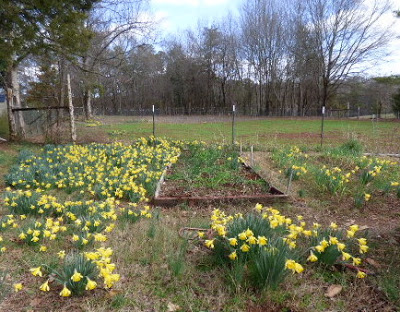 |
| Daffodils! |
Source: http://www.5acresandadream.com/2017/02/garden-swales.html


